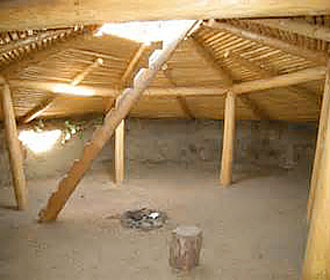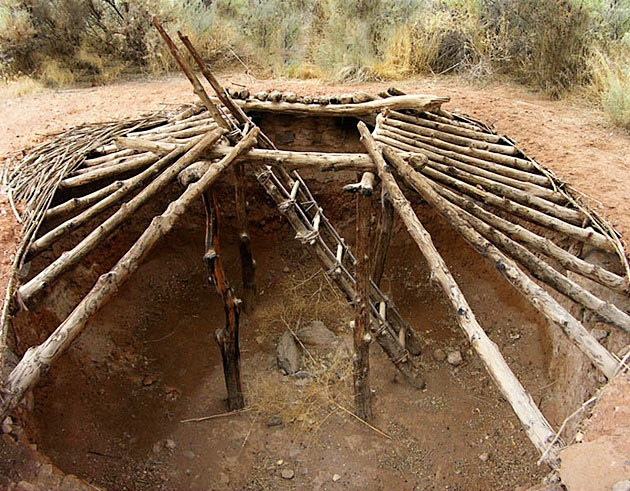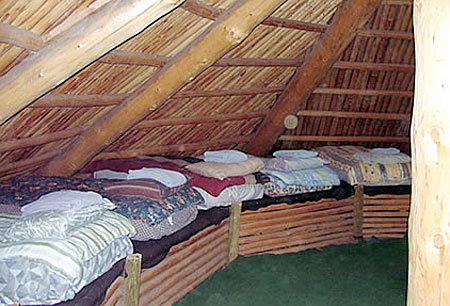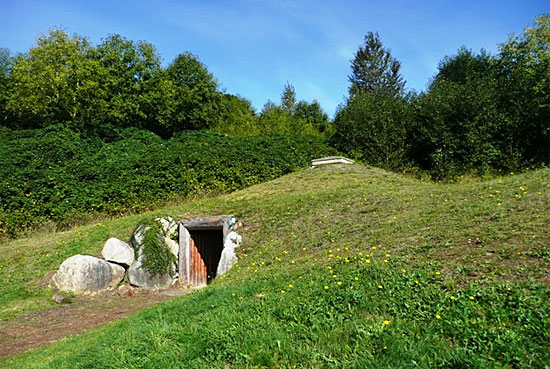Pit Houses
A pit house is, as its name would suggest, a dwelling that is
at least partly below the ground. In New Mexico, near Taos, they
are completely below the ground. The roof beams rest on the ground,
atop four supports. As you might expect, this is a very rudimentary
form of housing, and the inhabitants of pit houses have to be
satisfied with very little in the way of creature comforts.
 The Pit House
The Pit House |
|
Pit houses are typically small, usually no more than ten or
twelve feet in diameter. They are easily built - the only tools
needed are a shovel, a saw, and a hammer. If one hits rock while
excavating, a "pony wall" may need to be constructed
on a footer at ground level in order to bring the ceiling height
up to a habitable level. Because the diameter is usually so small,
access is not gained via a traditional staircase.
The form of entry and exit is generally a ladder.

Old Pit House
One advantage to a pit house
is that in the hot weather, it can be pleasantly
cool inside the dwelling. The other side of the coin is that,
when the weather turns cold, it is often necessary to build a
small fire in a central hearth in order to provide warmth. The
fire will be needed to provide light for various activities, and
will also be needed for cooking, since the power utility is not
going to bring electricity to your pit house. On pleasant days,
therefore, the pit house dweller typically prefers to be outside.
In the days when pit houses were common, the day-to-day business
of living was time-consuming and difficult. People ground their
own corn and grain, and made their own pottery to carry water
and serve food. Grinding was hot, time-consuming work, usually
done outdoors. Making pottery could be difficult. The heat from
the fire was useful for drying the clay, but if the piece was
placed too close, the clay could dry too rapidly and would crack.

Modern Pit House Interior
Arrowheads had to be made
from stone in order to hunt animals for food and
hides. Meat was typically dried into jerky, food preservation
methods not being as refined as they are today. Hides were also
dried for use in clothing and bedding. Again, proximity to the
fire could result in the hides becoming dry too quickly, and they
would become tough.
Keeping the pit house clean was also challenging. No matter how
often a dirt floor is swept, something is sure to be left behind.
Pit houses can also become home to unwanted guests, like insects,
snakes, and other vermin.

Outside of a Pit House
Conclusion
Pit houses are easy to build, and the materials needed are dirt
cheap. If nothing else, it might be fun to build a pit house as
a family activity. Children will have hours of fun in this unique
sort of playhouse, and you'll get a real sense of what life was
like for ancient cultures. It can also be used as a clubhouse
or second home or even a vacation home.
|

